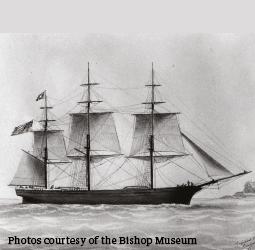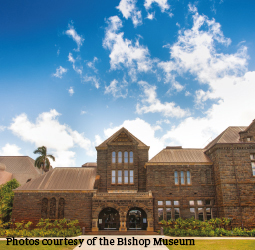Home > Highlighting JAPAN > Highlighting Japan August 2018 > Topics
Highlighting JAPAN


Marking the Arrival of Japanese Immigrants in Hawaii
To mark the 150th anniversary of the first Japanese immigrants landing on Honolulu’s shores, Hawaii is putting on a host of commemorative events during 2018.
Approximately 150 Japanese immigrants landed in Honolulu, Hawaii in the year 1868, the first year of the Meiji era (1868-1912) in Japan. They are called gannenmono, meaning “first-year people.” In 2017, celebrating the 150th anniversary of the arrival of these settlers, a group of twenty organizations called the Kizuna Group formed the Gannenmono Committee to represent the Japanese-American community in Hawaii.
Under the Meiji government at that time, journeying abroad was still illegal, thus making the gannenmono illegal travelers. They were treated as lawbreakers and viewed with distaste back in Japan. However, they developed a good relationship with local Hawaiians, and after Japan and the Kingdom of Hawaii concluded the Treaty of Amity and Commerce in 1871, around two hundred thousand more Japanese immigrated to Hawaii between 1885 and 1924, after which emigrating from Japan was banned by the United States government.
Members of the Kizuna Group that form the Gannenmono Committee are all part of different organizations with their own purpose and mission. “But we all share one common idea,” says Sal Miwa, chairman of the Japan-America Society of Hawaii and one of the three co-chairs of the committee.
According to Miwa, at its peak nearly 43 percent of Hawaii’s population was Japanese, but that has decreased to around 14 percent. “In addition, the majority of those 14 percent do not speak Japanese, and only acknowledge their heritage by their Japanese last name,” he says.
Miwa adds that there are many successful Japanese-Hawaiians, and 37 percent of current city and state government officials have a Japanese last name.
“Many Japanese-Hawaiians are good-natured, hard workers, and do not discriminate or harm others, so they’re not a target of jealousy,” he notes. “Along with demonstrating these positive behavioral traits, our main wish is to leave good memories and pass down the efforts of our Japanese ancestors in Hawaii to the next generation.”
Many events were held to highlight the Japanese-American legacy, such as the Gannenmono Exhibition and Bon-Odori Dance Festival. The main event—the Gannenmono 150th Anniversary Commemoration and Symposium in Honolulu—took place on June 7 at the Sheraton Waikiki Hotel. In addition to a memorial ceremony, the Consul General of Japan in Honolulu and several speakers were invited to give presentations. Tickets to the symposium sold out before the event, and well over five hundred people took part.
Miwa says that the two main issues the Gannenmono Committee faces are the lack of interest toward Japan among the younger generation and the increasingly advanced age of its main members. On the other hand, many Japanese-Hawaiians do have an interest in Japanese traditions, such as New Year’s celebrations and shichi-go-san, a children’s festival celebrating children three, five and seven years old. Miwa hopes these people will be the ones to pass down the legacy and honor the Japanese immigrants who came to Hawaii, and that they will continue to share their heritage and legacy with the younger generation and their descendants.
The Gannenmono Committee’s goal is to pass on the torch to the next generation of young Japanese-Hawaiians who have acknowledged and appreciate the wonders of Japan, and celebrate the 200th anniversary with them.
© 2009 Cabinet Office, Government of Japan








